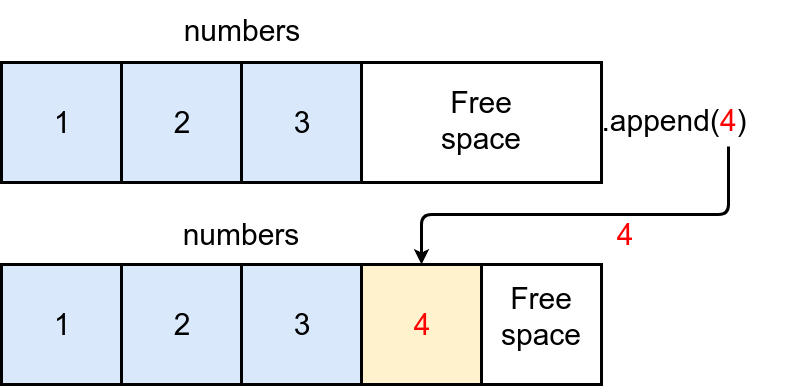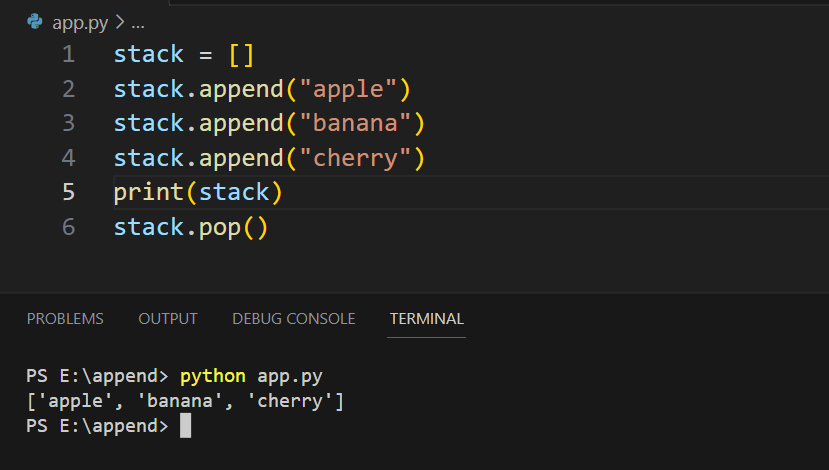Advertisement
If you're working with Python, chances are you've already bumped into lists. They're one of the most flexible, widely used data types, and when it comes to adding something to the end of a list, the append() method is your go-to. Whether you’re organizing strings, numbers, or even more lists, append() helps keep your data growing without breaking a sweat.
Let’s break down how append() works, what makes it unique, and some real examples that show its practical use. If you've ever wondered what happens behind the scenes or how it behaves in different situations, you'll get those answers, too.
At its core, the append() method in Python adds a single item to the end of an existing list. It doesn’t return a new list — it changes the original one. That distinction matters more than you might think, especially when you're manipulating data in loops or functions.
Here’s the basic syntax:
python
CopyEdit
list_name.append(item)
The item can be just about anything — an integer, string, list, dictionary, or object — and it'll land right at the end of your current list.
Example:
python
CopyEdit
fruits = ["apple", "banana"]
fruits.append("cherry")
print(fruits)
# Output: ['apple', 'banana', 'cherry']
It’s that straightforward — but once you start nesting items or working with dynamic data, the simplicity becomes pretty powerful.
The cool part about append() is that it doesn’t care what type of data you throw at it. But the way it adds that data can trip you up if you’re not paying attention.
Let’s say you’re building a list of scores.

python
CopyEdit
scores = [89, 92]
scores.append(76)
print(scores)
# Output: [89, 92, 76]
Simple addition; no surprises here.
Strings go in just as easily:
python
CopyEdit
words = ["hello", "world"]
words.append("python")
print(words)
# Output: ['hello', 'world', 'python']
No extra splitting, just dropped in as a single string element.
This is where people often expect something different. If you append a list to another list, it doesn’t merge the contents — it adds the entire list as a single item.
python
CopyEdit
a = [1, 2, 3]
b = [4, 5]
a.append(b)
print(a)
# Output: [1, 2, 3, [4, 5]]
That’s right: the whole [4, 5] becomes one last element inside a. If you wanted to combine the contents, you’d need to use extend() instead — but that’s a topic for another day.
The same idea applies here. Append will treat a dictionary as a single unit.
python
CopyEdit
data = []
data.append({"name": "Alice", "age": 30})
print(data)
# Output: [{'name': 'Alice', 'age': 30}]
It tacks the entire dictionary onto the end without merging anything.
You won’t just be calling append() in isolation. Most of the time, you’ll be using it inside loops, conditional blocks, or while reading input from external sources. These patterns pop up all the time.

Here’s a classic use case. You’re collecting numbers from some kind of input and want to store them in a list.
python
CopyEdit
numbers = []
for i in range(3):
val = int(input("Enter a number: "))
numbers.append(val)
Each user input goes right to the end of the list in order. Clean and effective.
Let's say you want to extract even numbers from a list and store them in a separate location.
python
CopyEdit
original = [5, 8, 13, 22, 7, 10]
evens = []
for num in original:
if num % 2 == 0:
evens.append(num)
print(evens)
# Output: [8, 22, 10]
Only the numbers that meet the condition go in — and their order is preserved.
Sometimes, you’re running a function on a loop and storing each result.
python
CopyEdit
def square(x):
return x * x
results = []
for i in range(1, 6):
results.append(square(i))
print(results)
# Output: [1, 4, 9, 16, 25]
Nothing fancy, just a function feeding a growing list.
What You Need to Know About append() Behavior
Now that you’ve seen how it works, there are a few things you should know that can save you from unexpected results.
This is a big one. When you use append(), the list changes directly — it doesn’t return a new list for you to assign.
python
CopyEdit
my_list = [1, 2]
result = my_list.append(3)
print(result)
# Output: None
The output is None because append() returns nothing. But my_list now has the added item.
python
CopyEdit
print(my_list)
# Output: [1, 2, 3]
This is useful when you want to keep changing the same list, but it can confuse if you're chaining methods or trying to use the result of append() directly.
Even if that item is a whole chunk of data (like a list or dictionary), append() only ever adds one item per call.
python
CopyEdit
data = []
data.append([1, 2])
data.append([3, 4])
print(data)
# Output: [[1, 2], [3, 4]]
Every call to append() = one new item in the list. Don’t expect it to flatten or break anything up.
In Python, there are numerous ways to manage and manipulate lists. But when it comes to simply adding something to the end, append() is the tool most folks reach for — and with good reason. It’s clean, it’s simple, and it plays nicely with everything from numbers to complex structures.
Once you understand that it changes the original list and only adds one item at a time, you’ll know exactly what to expect. That’s often the difference between a script that works and one that gives you a frustrating surprise. Whether you’re collecting user data, building results from scratch, or working through an algorithm, append() will probably be one of the first list methods you use — and one of the most reliable.
Advertisement

Discover how Cerebras’ AI supercomputer outperforms rivals with wafer-scale design, low power use, and easy model deployment

Intel’s deepfake detector promises accuracy but sparks ethical debates around privacy, data usage, and surveillance risks

Find how AI is transforming the CPG sector with powerful applications in marketing, supply chain, and product innovation.

What if your AI could actually get work done? Hugging Face’s Transformer Agent combines models and tools to handle real tasks—file, image, code, and more

Explore how AI innovates the business world and what the future of AI Transformation holds for the modern business world

How depth2img pre-trained models improve image-to-image generation by using depth maps to preserve structure and realism in visual transformations

Discover 7 effective ways to accelerate AI software development and enhance speed, scalability, and innovation in 2025.

How Vision Transformers (ViT) are reshaping computer vision by moving beyond traditional CNNs. Learn how this transformer-based model works, its benefits, and why it’s becoming essential in image processing

Compare Microsoft, Copilot Studio, and custom AI to find the best solution for your business needs.

Apple’s AI-powered RoomPlan uses LiDAR and AI to create accurate 3D room models that integrate seamlessly with top design apps

Find why authors are demanding fair pay from AI vendors who are using their work without proper consent or compensation.

How Netflix Case Study (EDA) reveals the data-driven strategies behind its streaming success, showing how viewer behavior and preferences shape content and user experience